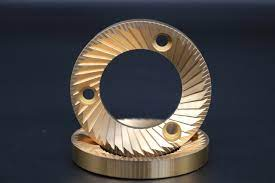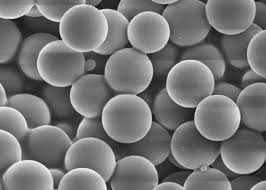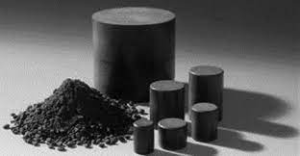Epoxy molding compound (EMC) is the most critical thermosetting polymer composite material for packaging electronic devices and integrated circuits. As one of the primary packaging materials, the epoxy plastic compound plays a very crucial role in electronic packaging.
So far, more than 95% of microelectronic devices are epoxy plastic-sealed devices. The main components of common epoxy molding compounds are 60-90% filler, less than 18% epoxy resin, less than 9% curing agent, and about 3% additives. The currently used inorganic fillers are basically silica powder, with a content of up to 90.5%. They can reduce the thermal expansion coefficient of plastic packaging materials, increase thermal conductivity, reduce dielectric constant, are environmentally friendly, flame retardant, reduce internal stress, and prevent absorption. Moisture can increase the strength of plastic packaging materials and reduce the cost of packaging materials.
The index requirements of spherical silica powder for EMC are as follows:
1) High purity
High purity is the most basic requirement for materials for electronic products. In ultra-large-scale integrated circuits, the requirements are even more stringent. Except for the low content of conventional impurity elements, the content of radioactive elements also needs to be as low as possible or absent.
Spherical silica powder produced in the United States for immense-scale integrated circuit packaging materials:
The SiO2 content reaches more than 99.98%; the total content of metal oxides such as FeAlCaMg is less than 130×10-6; the radioactive element content is within 0.5×10-6;
Spherical silica powder produced in Japan: SiO2 content reaches 99.9%; Fe2O3
The content can reach 8×10-6; the Na+K+Ca2+Cl- plasma content in the water quenching solution can reach below 5×10-6, respectively; the radioactive U content can go below 0.1×10-9.

2) Ultra-fine and high uniformity
The spherical silica powder used in some countries for massive-scale integrated circuit packaging materials has fine particle size, narrow distribution range, and good uniformity. In the United States, it is generally 1-3 μm. In Japan, the average particle size is generally 3-8 μm, and the maximum particle size is less than 24 μm.
3) High spheroidization rate and high dispersion
A high spheroidization rate is a prerequisite for ensuring high fluidity and high dispersion of fillers. A high spheroidization rate and good sphericity can provide good fluidity and dispersion properties of the product. It can be fully dispersed and distributed in the epoxy molding compound to guarantee the best filling effect. The spheroidization rate of foreign products can generally reach more than 98%, while the spheroidization rate of domestic materials can generally only reach about 90%, and a few can reach 95%. China has become the second-largest producer of EMC in the world, and exports are also increasing. Overseas customers of manufacturers are gradually growing, with customers in Europe, the United States, Southeast Asia, mainland China, and Taiwan. This has changed the world’s semiconductor EMC industry, which Japanese companies mainly monopolize. The competitive landscape has also changed the global semiconductor packaging industry’s perception of China’s domestic plastic packaging materials, and the market demand for spherical silica powder is also increasing.

Supplier
TRUNNANO is a supplier of spherical silica powder with over 12 years experience in nano-building energy conservation and nanotechnology development. It accepts payment via Credit Card, T/T, West Union and Paypal. Trunnano will ship the goods to customers overseas through FedEx, DHL, by air, or by sea. If you are looking for high-quality spherical silica powder, please feel free to contact us and send an inquiry.
